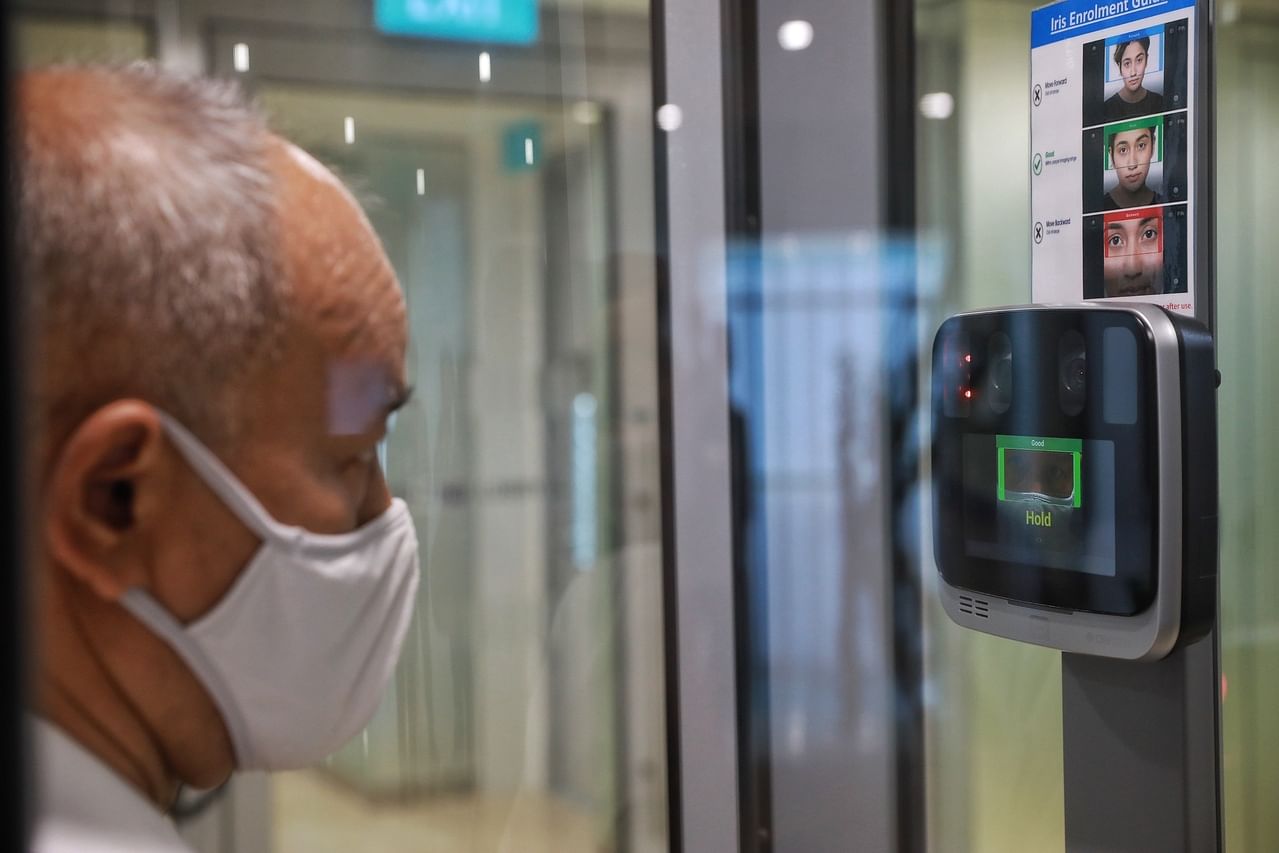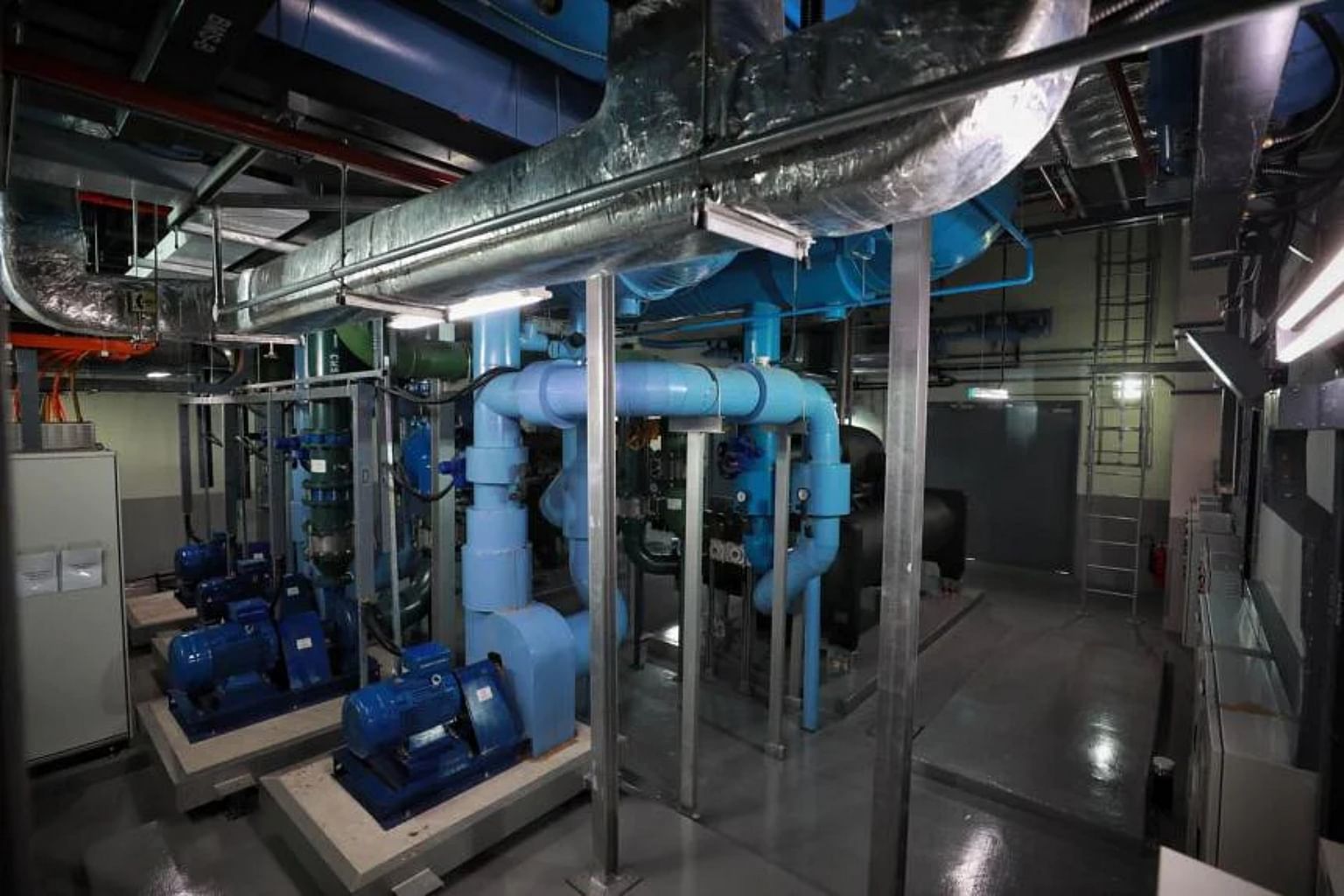OCBC data centre to get new cooling system by end-2022 to cut carbon emissions
Sign up now: Get ST's newsletters delivered to your inbox
Kenny Chee
Follow topic:
SINGAPORE - OCBC Bank is planning to put in place a new cooling system at its regional data centre in Singapore by the end of this year to help it become greener.
The "rack-based" cooling system is one of the latest energy-efficient cooling methods for data centres, the local bank said on Wednesday (May 25) as it announced broad efforts to reduce its carbon footprint globally.
It allows cooling units to be installed closer to servers in the data centre, so that cooling is more targeted.
With the system in place, OCBC expects its data centre's carbon emissions to be cut by more than 400 tonnes every year, the equivalent of removing almost 400 cars from roads annually.
OCBC's $240 million data centre, located in the eastern part of the country, contributes 40 per cent of the bank's carbon emissions in Singapore. The six-storey facility has been operational since 2017.
Data centres have been in the spotlight here amid global warming concerns since they are huge carbon emitters because of how much energy they consume to run servers and keep them cool.
For instance, the Singapore Government has put in place a moratorium since 2019 that paused the release of state land for data centres and the development of new ones on existing state land.
This was so that the Government could review how to grow the industry more sustainably in a way consistent with Singapore's climate change commitments.
In 2020, data centres - which facilitate data exchange, processing and storage so that online services can be delivered - accounted for 7 per cent of total electricity consumption in Singapore.
There are more than 70 operational data centres in Singapore as at last year.
Efforts have been made here and elsewhere to make data centres greener.

Retina scanner being used in OCBC’s data centre on May 25, 2021. Graphic with preamble on data centres in Singapore.
PHOTO: ST
In June last year, the National University of Singapore, Nanyang Technological University and data centre stakeholders established a new $23 million research programme to develop innovative and sustainable cooling solutions for data centres located in tropical locations.
The aim is to cut energy consumption and greenhouse gas emissions by up to 25 per cent as compared with conventional data centres which are traditionally cooled by air.
If the technologies are adopted industry-wide across the entire tropical region, energy use from the data centre industry could be lowered by at least 40 per cent.
OCBC's data centre has existing green features. In 2017, the facility was awarded the Government's Green Mark Platinum award, the highest award given out to data centres here with energy-saving designs, operations and management.
Besides using energy-saving LED lights, the data centre has water-based cooling systems that can cut water and energy use for cooling densely packed servers.
The data centre uses recycled Newater for its cooling towers. This water is maintained at a higher than usual temperature of 12 deg C, so less energy is needed to maintain its temperature.
The ambient temperatures of the facility's halls housing its servers have also been gradually raised from between 19 deg C and 22 deg C, to between 25 deg C and 26 deg C, without affecting how the equipment operates. This translated to energy savings of about 10 per cent to 15 per cent.

OCBC's data centre supports the operations of the bank's entities, including the Bank of Singapore, Great Eastern and overseas branches across 19 countries.
With large amounts of data and critical information stored, processed and transmitted, the data centre also has several security features.
For example, it has a technology command centre that monitors and manages cyber security and day-to-day operations of core information technology systems.
Entry into the data centre is controlled, with multiple barriers and checks in place. A license plate recognition system is used to identify vehicles entering the data centre, while a scanner checks the undercarriage of vehicles for suspicious objects. Guards will also use "sniffing" machines to check for explosive materials.
Guards will check visitors' identity cards, as well as belongings for any restricted items like weapons.
To access a hall with servers, a person needs to enter a "tubestile" where his iris is scanned to verify his identity before he can be let in. The tubestile also has a metal detector.

